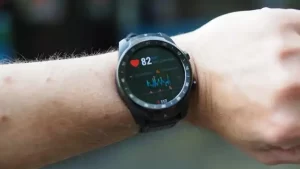Daratumumab approved to treat AL amyloidosis
- Aspirin: Study Finds Greater Benefits for These Colorectal Cancer Patients
- Cancer Can Occur Without Genetic Mutations?
- Statins Lower Blood Lipids: How Long is a Course?
- Warning: Smartwatch Blood Sugar Measurement Deemed Dangerous
- Mifepristone: A Safe and Effective Abortion Option Amidst Controversy
- Asbestos Detected in Buildings Damaged in Ukraine: Analyzed by Japanese Company
Daratumumab approved to treat AL amyloidosis
- Red Yeast Rice Scare Grips Japan: Over 114 Hospitalized and 5 Deaths
- Long COVID Brain Fog: Blood-Brain Barrier Damage and Persistent Inflammation
- FDA has mandated a top-level black box warning for all marketed CAR-T therapies
- Can people with high blood pressure eat peanuts?
- What is the difference between dopamine and dobutamine?
- What is the difference between Atorvastatin and Rosuvastatin?
- How long can the patient live after heart stent surgery?
Daratumumab approved to treat AL amyloidosis. Amyloidosis is a rare and potentially fatal disease that causes the deterioration of other organs in the body.

Recently, the US FDA announced the approval of Daratumumab subcutaneous preparation (Daratumumab, trade name: Darzalex Faspro) in combination with bortezomib, cyclophosphamide and dexamethasone (D-VCd regimen) for the treatment of newly diagnosed light Adult patients with amyloidosis (AL).
Daratumumab is the first and only drug approved to treat this blood cell disease.
▌”cunning” amyloidosis
Amyloidosis is a rare and potentially fatal disease. It is a clinical syndrome in which amyloid deposits between the cells of various organs in the body caused by various reasons, resulting in the gradual failure of the functions of the involved organs. Among them, light chain (AL) amyloidosis is the most common. In China, AL amyloidosis accounts for 93% of patients diagnosed with amyloidosis, and the incidence increases with age.
Amyloid deposits accumulate in vital organs and eventually lead to organ degeneration, but the most commonly affected organs are the heart, kidney, liver, spleen, gastrointestinal tract, and nervous system.
Moreover, the disease is extremely “cunning” and often exhibits non-specific symptoms similar to those common to these affected organs, so it is easily covered by the original disease of the organ. About one-third of patients have undergone more than 5 treatments before being diagnosed, and 72% of patients were diagnosed more than a year after their first symptoms.
Due to the delay in diagnosis and multiple organ involvement, patients with AL amyloidosis have a poor prognosis and a high mortality rate, with about 30% of them dying within one year after diagnosis.
At present, there is no cure for AL amyloidosis, and there are no approved drugs at home and abroad.
Cyclophosphamide/bortezomib/dexamethasone-based regimens or peripheral blood autologous stem cell transplantation (ASCT) are the standard/first-line treatments for newly diagnosed patients.
However, the remission rate of current therapy is not high, about 30%, so more effective treatment plan is urgently needed.
▌Daratumumab targeting CD38
Daratumumab is a humanized, anti-CD38 monoclonal antibody that binds to CD38 expressed by tumor cells, inhibits tumor cell growth through a variety of immune-related mechanisms, and induces myeloma cell apoptosis. CD38 is a surface protein, which is abundant in multiple myeloma cells regardless of the stage of the disease.
Daratumomab (injection form) was first approved by the FDA in 2015 to treat multiple myeloma. This is the world’s first monoclonal antibody targeting CD38, providing a new treatment option for multiple myeloma patients who have relapsed after treatment with other drugs.
At present, daratumomab has been approved for the first-line, second-line, and multi-line treatment of MM in many countries around the world, and has become the clinical mainstream therapy for the treatment of MM. In July last year, daratumomab injection (Zhao Ke) was approved for marketing in China for the single-drug treatment of adult patients with relapsed and refractory MM.
In May last year, daratumomab subcutaneous preparation (SC) was approved for marketing in the United States, and it only needs 3 to 5 minutes to be administered by subcutaneous injection. Compared with the time-consuming intravenous dosage form, it greatly facilitates the treatment of patients.
▌The blood complete remission rate exceeds 3 times! The clinical trial data is amazing
The FDA’s approval is based on the positive results of the Phase 3 ANDROMEDA trial, which has been published at the 2020 annual meeting of the American Society of Hematology (ASH).
The study included 388 newly diagnosed AL amyloidosis patients with one or more organ involvement. The purpose of the study is to compare the current standard therapy VCd regimen with daratumumab subcutaneous preparation combined with VCd regimen. The rate of complete blood remission in patients.
Sum up:
Compared with the VCd regimen alone, patients in the daratumomab subcutaneous preparation treatment group achieved a higher blood remission rate (42% VS 13%), and the time to remission was greatly improved.
In addition, daratumomab can significantly improve the patient’s organ involvement. Both the cardiac remission rate (42% VS 22%) and the renal remission rate (54% VS 27%) have doubled.
Currently, the drug is not recommended for patients with NYHA IIIB or IV heart disease and Mayo IIIB AL amyloidosis.
The approval of the subcutaneous preparation of daratumumab provides new hope for treatment of this type of AL amyloidosis patients with multiple organ involvement, rapid progress and poor prognosis.
However, good doctors reminded that at present daratumumab is only approved for injection in China, and domestic patients with AL amyloidosis must not try it rashly.
Daratumumab approved to treat AL amyloidosis
(source:chinanet, reference only)
Disclaimer of medicaltrend.org



